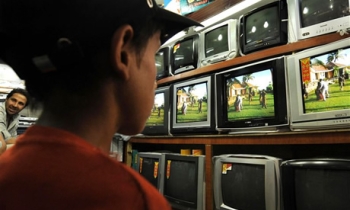NEW YORK: The Associated Press will be ending its highly-touted “asap” service in October, E&P has learned.
Staffers were notified this morning about its October 31 demise as a stand alone. It’s not known if any layoffs will come. About 200 newspapers subscribed to the service.
It was launched in 2005 as a response to the growth of blogs and so-called youth tabs, and had 24 staff members. It offers a variety of packages and reports (including a lot of video and photo galleries) targeting a younger and/or quirkier audience than the standard AP report.
Elements of the service will be incorporated into the regular AP report.
ASAP Editor Ted Anthony declined to say why the product was being disbanded, but said part of the reason was an effort to take the approach and weave it more within other AP services.
ASAP began as a way for the news cooperative to target younger audiences, 18 to 34, said Anthony. But he said it evolved into more of a place for unique multimedia packages.
“At the beginning, we had almost no video or podcasts and now we have regular video and podcasts and about 15 stand alone video packages each week,” he said this afternoon.
He would not say what the annual budget had been for the service, or how much each Web site paid to use it, although he said it required an additional charge.
“It was evolving into this story-telling service that allowed AP reporters to express themselves in ways other AP functions wouldn’t allow,” he said. He said no decision had been made on the 24 staffers, but believed many of them would be reassigned to other AP services.
AP Executive Editor Kathleen Carroll called ASAP “an editorial success, but not a similar success economically.”
“We are in the business to do great news coverage and interesting products in a way that is fiscally responsible,” she added. “Going forward, we are looking at ways we can replant this service.”
Carroll blamed part of the economic failure on “a number of marketplace changes that were happening with the U.S. newspaper industry.”
The service had been most popular during its first few months when nearly 300 customers signed on, Anthony explained. But in the past year, that had dwindled to the current 200 or so. “We had critical feedback at first, but it was well-received,” he said. “We responded to it.”
ASAP customers could utilize the service in three ways: by linking directly to AP’s Web site and its complete package of stories, videos and audio; receiving a feed of ASAP reports and placing them on their own sites; or running a print version of the text and images. “It was much more focused on multimedia and online,” he said.
The service will continue as it is until Oct. 31, 2007, but Anthony said no decisions had been made on how its elements would be utilized in other AP offerings. “We have been very eager to get this out into the larger AP,” he said.
An E&P feature on AP executive editor Kathleen Carroll in April noted that “asap” had earned success in some areas but did not achieve a great number of page views everywhere.
E&P last wrote about asap on June 21 as one of E&P Online Editor Pauline Millard’s “Pauline’s Picks.” Here is an excerpt.
*
Hitting the elusive 18-to-34 demographic is a challenge not only for advertisers, but for newspapers as well. As the traditional newspaper reader ages, papers need to find new ways to attract young people to their product — which is increasingly going online.
A few years ago The Associated Press started asap, a news service aimed at younger readers. The writing is bright, the reporters are young and most importantly they’ve stayed open-minded about using new forms to tell news.
One of their most innovative reporters is Derrik J. Lang, who came on in 2004. In addition to his daily reporting duties, he started The Slug, a blog for asap about pop culture. But Lang didn’t limit himself to just television and movies. Eventually he and his colleague Ryan Pearson started reporting about video games, which is one of the fastest-growing trends for young people.
At the risk of stating the obvious, young people today are accustomed to an MTV style of news. They know VJs and reality show characters by their first names and have very strong opnions about them. That said, when they glean information, it needs to have some personality to it. Enter Lang and Pearson.
About once a week or so Lang and Pearson host “Up, Down, Left, Right” a short show about video game news that runs on the AP video wire, as well as on The Slug. Lang and Pearson, ever the intrepid reporters, go to gaming conventions and events and talk to the brains behind the game. In one very amusing segment Lang faced off against comedian Patton Oswalt, the voice behind the Disney movie and video game “Ratatouile.”
The strength of these segments are the hosts’ personalities. They clearly love all this gaming stuff. This mix of enthusiasm and expertise makes the show addictive, and creates an interesting format that could be used at other papers.









